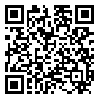BibTeX | RIS | EndNote | Medlars | ProCite | Reference Manager | RefWorks
Send citation to:
URL: http://tkj.ssu.ac.ir/article-1-715-en.html
Introduction: Migraine is the most common type of chronic headache. Stress can trigger migraine and effect on the duration of migraine attacks. . One of the main reasons of job stress is inappropriate job design. The aim of the current study was to investigate the new cases of migraine regarding models of effort-reward imbalance and demand-control imbalance in job.
Methods: Two job designs namely effort-reward imbalance and demand-control imbalance models were applied to predict new-onset migraine. Samples were 3338 persons who worked in industrial companies in Iran. Four instruments were used (job stress, ERI questionnaire, demand control and Self-reported questionnaire for migraine) Age and the economic status were used as covariate variables. Binary logistic regression analysis and odd ratio were used for analyzing the data. Statistical analysis was performed in
M plus 4.2 Software.
Results: The findings indicated that risk of increasing migraine was increased among those with high effort-reward imbalance (odd ratio 1/28 to the reference group) and those who have little control over their jobs (odd ratio 1.11 to the reference group) as well as people who are strongly committed to their work (odd ratio 1.17 to the reference group).
Conclusion: Migraine could be produced by inappropriate work design. Therefore, work redesign especially among the persons experienced the effort-reward imbalance may decline new onset migraine.
Received: 2015/12/24 | Accepted: 2016/10/24 | Published: 2017/05/27
| Rights and permissions | |
 |
This work is licensed under a Creative Commons Attribution-NonCommercial 4.0 International License. |





